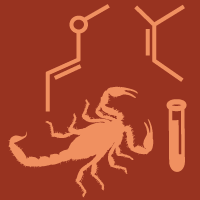Topic Menu
► Topic MenuTopic Editors


2. Manchester Food Research Centre, Manchester Metropolitan University, Manchester M1 5GF, UK
Food Hygiene and Food Safety

Topic Information
Dear Colleagues,
Aptamer-Based Methods for Food Safety and Hygiene. Global population growth and the increasing complexity of food supply chains have increased the need for simple, cheap, rapid and portable technologies to ensure consumer protection and satisfaction. Historically, antibodies have been exploited in a wide range of technologies that are suitable for the maintenance of food safety and quality; however, aptamers exhibit properties that are potentially more conducive to the development of rapid assays and sensors. This Topic will explore recent advances in aptamer-based assay and sensor development that are suitable for monitoring the food supply chain for contaminants, allergens and pathogens. Areas of particular interest include the detection of anti-microbial resistance, food authenticity and fraud prevention, biofilm detection and control; issues that are of growing global concern and with the potential to cause significant economic disruption and health impacts if not controlled.
Prof. Dr. Graham Bonwick
Prof. Dr. Yu Zhou
Dr. Lan Gao
Prof. Dr. Christopher Smith
Topic Editors
Keywords
- aptamer
- food
- safety
- hygiene
- methods
- sensors
- assays
- mycotoxins determination
- risk assessment
- toxins detoxification
- food contaminants
- nutrition
- reproductive health
Participating Journals
| Journal Name | Impact Factor | CiteScore | Launched Year | First Decision (median) | APC |
|---|---|---|---|---|---|

Hygiene
|
- | - | 2021 | 19.2 Days | CHF 1000 |

International Journal of Environmental Research and Public Health
|
- | 7.3 | 2004 | 25.8 Days | CHF 2500 |

Microorganisms
|
4.1 | 7.4 | 2013 | 11.7 Days | CHF 2700 |

Safety
|
1.8 | 3.2 | 2015 | 29.7 Days | CHF 1800 |

Toxins
|
3.9 | 7.5 | 2009 | 20.3 Days | CHF 2700 |

Preprints.org is a multidisciplinary platform offering a preprint service designed to facilitate the early sharing of your research. It supports and empowers your research journey from the very beginning.
MDPI Topics is collaborating with Preprints.org and has established a direct connection between MDPI journals and the platform. Authors are encouraged to take advantage of this opportunity by posting their preprints at Preprints.org prior to publication:
- Share your research immediately: disseminate your ideas prior to publication and establish priority for your work.
- Safeguard your intellectual contribution: Protect your ideas with a time-stamped preprint that serves as proof of your research timeline.
- Boost visibility and impact: Increase the reach and influence of your research by making it accessible to a global audience.
- Gain early feedback: Receive valuable input and insights from peers before submitting to a journal.
- Ensure broad indexing: Web of Science (Preprint Citation Index), Google Scholar, Crossref, SHARE, PrePubMed, Scilit and Europe PMC.



